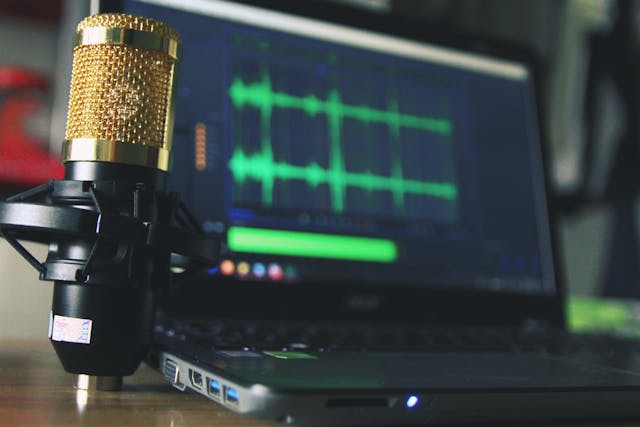WAV files are known for their high-quality, uncompressed audio, making them a popular choice in professional music production, broadcasting, and archiving. However, the very thing that makes WAV appealing (its uncompressed fidelity) also makes it large in size. A three-minute song in WAV format can easily be 30–50 MB in size, which can be a challenge when sharing files online, saving to limited storage, or sending via email.
So, how can you compress WAV files while keeping as much quality as possible? In this guide, we’ll walk through why compression is useful, what options are available, and introduce a handy free tool that can help you convert and compress your WAV files quickly.
Why Even Compress WAV Files?
There are several practical reasons to compress WAV files:
-
Save Storage Space – Large collections of WAV files can take up gigabytes quickly, especially on laptops, phones, or portable drives.
-
Easier Sharing – Many email services limit attachments to around 25 MB. Compression ensures your files can be sent without trouble.
-
Faster Uploads and Downloads – Smaller files transfer more quickly, making it easier to share music, podcasts, or recordings online.
-
Streaming and Compatibility – Compressed files like MP3 are better suited for streaming platforms or portable players with limited resources.
Two Types of Compression: Lossless vs. Lossy
When talking about compressing audio, there are two primary methods:
-
Lossless Compression
This reduces file size without losing any audio data. Formats like FLAC or ALAC shrink WAV files while keeping the sound identical to the original. However, the file sizes are still relatively large compared to lossy formats. -
Lossy Compression
This method discards some data to significantly reduce size, with MP3 or AAC being the most common formats. While you lose some fidelity, modern codecs are very efficient—most listeners won’t notice much difference at higher bitrates (e.g., 256 kbps or 320 kbps).
Method 1: Using Online Tools
For many users, the easiest way to compress a WAV file is by using a free online converter. These tools allow you to upload your WAV file, choose an output format, and download a smaller file in just a few clicks.
This site, WAVConverter.com is a free tool designed specifically for handling WAV files and other audio formats. You can:
-
Convert WAV to MP3, AAC, or OGG for much smaller file sizes.
-
Convert back from MP3 (or other formats) to WAV if needed.
-
Use it directly in your browser—no software installation required.
For anyone who needs a quick and simple solution, WAVConverter.com is one of the most accessible options.
Method 2: Using Audio Editing Software
If you want more control over compression, you might prefer dedicated software. Programs like Audacity (free), Adobe Audition, or Logic Pro allow you to:
-
Open WAV files and export them in compressed formats (like MP3, AAC, or FLAC).
-
Customize bitrate, sample rate, and channels to balance quality and size.
-
Edit your audio before compressing (trim silence, normalize levels, reduce noise).
This method is ideal if you’re working with music or podcasts and want professional results.
Method 3: Using Media Players
Some popular media players, like VLC Media Player, include built-in conversion features. For example, with VLC you can:
-
Open the WAV file.
-
Go to Media > Convert/Save.
-
Select MP3 or another compressed format.
-
Choose your compression settings and export.
It’s not as feature-rich as audio editing software, but it’s convenient if you already have VLC installed.
Tips for Compressing WAV Files
-
Balance Quality and Size – If you’re converting to MP3, choose at least 192 kbps for casual listening, or 320 kbps for near-CD quality.
-
Keep a Backup – Always save your original WAV file. Once compressed with lossy codecs, you can’t get the lost data back.
-
Batch Convert – If you have a large library, look for tools (like Audacity or WAVConverter.com) that let you compress multiple files at once.
-
Use Lossless for Archiving – If your goal is long-term storage, compressing WAV into FLAC is a good compromise: smaller files with no quality loss.
When Should You Keep WAV Files?
Although compression is useful, there are times when sticking with WAV is better:
-
Professional Music Production – Studios and engineers prefer WAV for editing, mixing, and mastering because it preserves all audio details.
-
Archival Purposes – If you want a true copy of your audio, WAV ensures nothing is lost.
-
High-End Equipment – If you’re listening through professional-grade speakers or headphones, WAV or FLAC may offer noticeable benefits.
In most casual cases, however, compressing to MP3 or AAC will give you much smaller files without a noticeable drop in quality.
Conclusion
WAV files are fantastic for high-quality audio, but their large size makes them impractical for everyday sharing and storage. By compressing them—whether into lossless formats like FLAC or lossy formats like MP3—you can make your files far more manageable without sacrificing too much in terms of sound.
For quick and hassle-free compression, WAVConverter.com is one of the best free online tools available. It not only reduces WAV file sizes but also lets you convert between formats like MP3, AAC, and WAV with ease. For professionals, software like Audacity or Adobe Audition gives more control, while media players like VLC provide a simple middle ground.
The key is to choose the right balance of quality and file size for your needs. Keep the original WAV for safekeeping, but don’t hesitate to compress when convenience and efficiency matter most.
